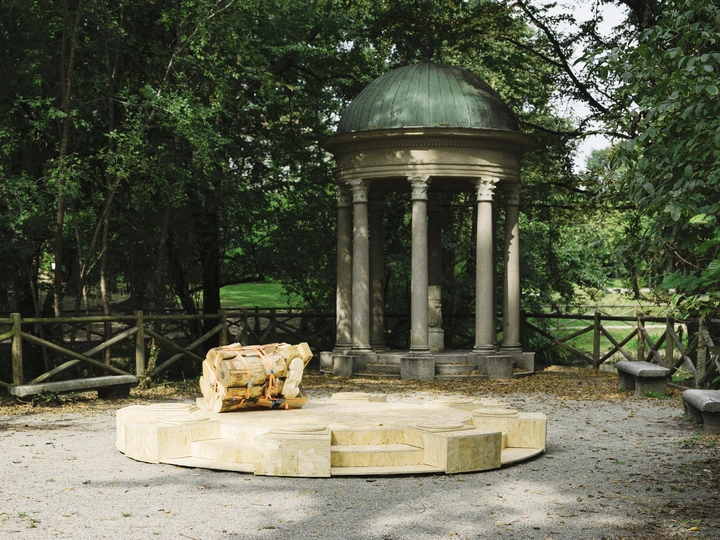Anatomy of a Fallen Tree

Alessandro Musolino (Milano, 1996) studied architecture at Politecnico di Milano and at UAL Lisboa, he graduated in 2022 with a research project on the representation of Nature in architecture, supervised by Cino Zucchi and developed in collaboration with the Museum of Natural History in Milano. He has worked with various milanese architecture offices and completed his training at Herzog & de Meuron in Basel. His main interest lies in the understanding of nature and its impact on the expression of architectural form and design processes. He experiments with research and design objects, exhibited during Milan Design Week 2024 and 2025 at Saturated Spaces and Galleria Rossana Orlandi. In 2024, together with the artistic duo Brinanovara, he created an installation selected by the municipality of Milano for the public park Giardini Belgiojoso reusing fallen tree trunks and recycled wooden panels.
In July 2023 a violent rainstorm caused 5’000 trees to fall across Milan. In the following weeks, these trees were chopped removed, shredded into chips or left abandoned in public parks. The transformation of the trees - from living organisms into wood and construction materials - was made visible to all, in the heart of the city. The installation reacts to the storm's aftermath by reflecting upon the different forms that trees take on during their life cycle and the different images and meanings attributed to these.
Trees are autotrophic organisms, capable of producing their own organic molecules from inorganic substances such as carbon dioxide and water, by relying on the energy from solar radiation. Trees therefore have no need to feed on other living beings, but instead vivify both themselves and countless other organisms.
The wood we use every day is the end product of a long production process in which trees lose their original characteristics and identity. Trees are transformed from living species into construction materials and their nature is hidden in various, unrecognizable forms - within the most ordinary objects.
The physical and conceptual distance between Trees and Wood is the result of an anthropogenic transformation that mystifies the ‘living’ origin of things.
The installation researches this distance. On one hand, the tree is turned into engineered wood and, in the shape of recycled OSB panels, re-builds the archetypal form of an existing temple; on the other hand, the tree lies bare and tries to reassemble itself in the form of a fallen capital, refusing transformation and revealing its true nature.
The installation brings these two contrasting images of wood together: the technical, “architectural” image, where wood chips and fragments are processed and reshaped by an industrial system into a material with a distorted artificial wooden texture; and the direct, “natural” image, in which tree parts show themselves in their unaltered state.